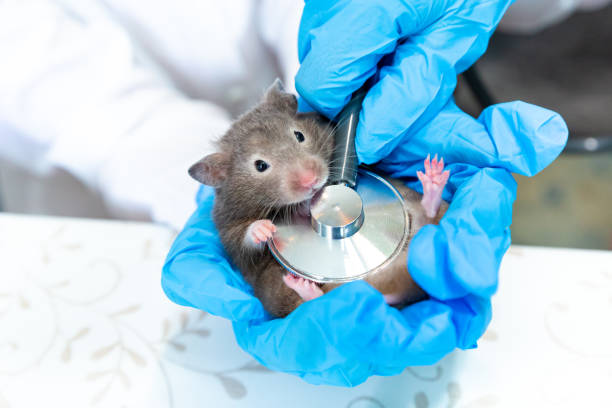
Elevated levels of natriuretic peptides in lungs of hamsters with genetic cardiomyopathy
Various alterations in the natriuretic peptide system have been observed in heart and plasma in humans and animals with heart failure. However, there is limited information about these hormones in hamster lung especially in those with genetic cardiomyopathy, a model of human congestive heart failure. Therefore, the aim of the present study was to investigate the content of the three natriuretic peptides (atrial natriuretic peptide (ANP); brain natriuretic peptide (BNP); C-type natriuretic peptide (CNP) and their gene expression in lungs of normal and cardiomyopathic hamsters. The presence of mRNA coding for ANP and BNP in lungs and heart was investigated by Northern blot and confirmed by reverse transcription polymerase chain reaction (RT-PCR). The peptide contents and plasma concentrations were determined by specific radioimmunoassays. Plasma ANP increased in hamsters with moderate to severe cardiomyopathy (aged 230 days) from control levels of 71.8+/-15.8 to 243.1+/-44.0 pg/ml (P < 0.01). Plasma BNP also increased from 79.7+/-23.5 to 227.9+/-51.6 pg/ml (P < 0.01). The levels of the three peptides in lungs of 30- and 120-day-old cardiomyopathic (CMO) hamsters were not different from their corresponding age-matched controls. However, lung ANP increased in 230-day-old CMO from 589+/-63 to 1624+/-219 pg/mg protein (P < 0.01). Lung BNP and CNP also increased from 332+/-35 to 531+/-55 pg/mg protein (P < 0.01) and from 118+/-21 to 224+/-29 pg/mg protein (P < 0.01), respectively. Lung ANP mRNA and BNP mRNA were significantly (P < 0.05) higher in 230-day-old hamsters than those detected in age-matched normal controls. Our data demonstrate that the hamster lungs produce ANP, BNP and CNP, and that this production is enhanced in moderate to severe cardiomyopathy. These findings imply that the lung natriuretic peptide system may participate in pulmonary function especially during cardiac dysfunction.
Discover More